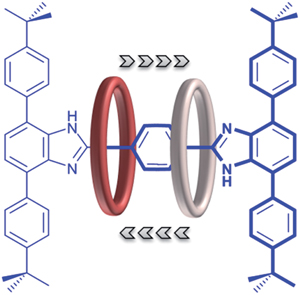Boronic esters have been used by US scientists to transform the triphenylene core in discotic liquid crystals (DLCs) from electron-rich to electron-deficient.
DLCs are used in electronic devices such as light emitting diodes. They need an electron-rich donor and an electron-poor acceptor. Current electron-poor acceptors have shortcomings including the fact that they can’t form columnar mesophases.
The team incorporated a boronic ester into the triphenylene core, which makes it an electron-poor acceptor and they were able to achieve broad mesophase temperature ranges.
Boronic Esters: A Simple Route to Discotic Liquid Crystals that Are Electron Deficient
Benjamin King and Luke Andrew Tatum
DOI: 10.1039/C2SC20128C











